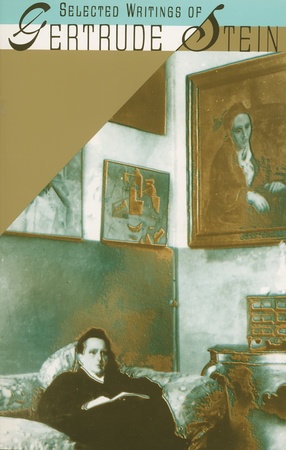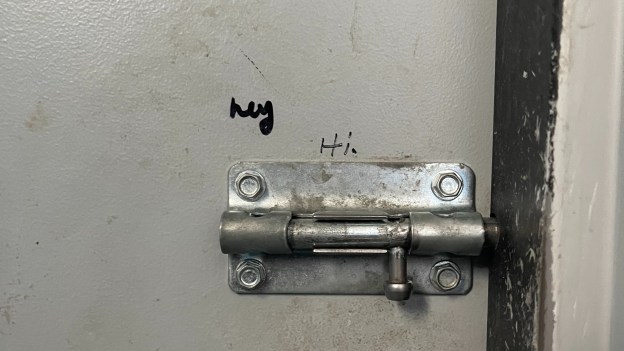This is a true story:
In my youth I didn’t “get” cubism. It was fine and all, not my favorite because the abstraction often left me feeling a little overwhelmed in a way that was boring (as opposed to the sensory overload of something more post modern where the cacophony of colors and textures starts to feel like it’s moving at the speed of my own millennial anxiety). Picasso felt like a “great man” myth; a justification for some shift in european ideals, a way to insure and assure the tastes and investments of the elite.
“Midnight in Paris” came out around this time (the last Woody Allen movie I would ever watch), as well. I was very impressed by the pitch perfect inclusion of Owen Wilson in that film as the most irritating white guy. I particularly enjoyed Adrian Brody’s Dalí, and Corey Stoll’s Hemingway (“Have you ever wrestled a tiger???”). Most importantly it really introduced me to the figure of Gertrude Stein. I had heard her name and sort of-kind of knew a bit about her, but I was deeply and intensely interested in this titanic dyke of modernism. The woman that Picasso and Hemingway sought to impress, who held the moment and the movement in her salons and her hands and her words.

I bought a copy of Vintage’s “Selected Writings of Gertrude Stein” from Symposium Books, back when they still had a storefront on Thayer Street in Providence. (At the same time I added Anaïs Nin to my “to read” list, and began my shallow but impassioned affair with James Joyce.)
Now, I didn’t really enjoy the writing of Gertrude Stein. I didn’t “get” it either, but she, at least, was using a medium which I had an easier time parsing than that of the painters. Her sentences were long, convoluted, often purposefully devoid of proper signifiers and disconnected from traditional structures of meaning.
I spent a lot of time just reading one word after another and hoping that I would make sense at some point. (It didn’t, entirely, but…)
Then I said to myself this time it will be different and I began. I did not begin again I just began. […] Naturally I would begin again. I would begin again I would naturally begin. I did naturally begin. This brings me to a great deal that has been begun.”
—Gertrude Stein. p. 518-9.
It was while reading The Autobiography of Alice B. Toklas that i realized two incredibly important things.
First, through Stein’s descriptions of the unease people felt looking at the works of Picasso and Matisse, the abrupt confrontation with a painting that demanded something from them, I had managed to really feel and understand, for the first time, why Picasso’s paintings were so important and significant in the evolution of art into the modern period.
Second, Gertrude Stein was a horrific chauvinist, exactly as inclined to dismiss the woman who shared her life in the same manner that the men around her dismissed their own female companions, lovers, and muses.
Indeed, the very title of Stein’s “autobiography” is redolent with this particular form of femme focused misogyny. After all, why should Gertrude retain the right to speak for Alice in such a manner when she could just as easily and just as well tell the story through her own person and presence which already figures (and presumably informs) the narrative? I made it about half-way through what was included of the novel in my volume of Stein’s works and then decided I’d had enough of the impenetrability, the disregard for female and feminine agency (Gertrude having aligned herself firmly with the masculine/male energy and expression of her male contemporaries), and historical time period which I found curious at best and sort of irritatingly self-involved at worst.
Stein herself was a disappointment, and largely confirmed my distaste for the masculinist and chauvinist writing of the time period (I still look with grave suspicion and distaste on anyone who eagerly explains to me how Hemingway has informed their writing practice), and—with the exception of a persistent interest in “The Rhinoceros” and the Modernist application of “plasticity” to literary material—I moved on to the somehow less galling, if no less obnoxious, male chauvinism of the Beat poets.
Why am I telling you this story? Why does it matter that at 15 or 16 I read some literary fiction didn’t like it very much? In a sense, it doesn’t. The process of my personal intellectual development and edification, auto-didactic as it has been in many ways, isn’t of exceptional interest to you, who may not know me. It probably isn’t of great interest to a number of people who do know me, either. But we find ourselves in the strange moment where it seems that the impressive oversight in the American, or perhaps even English-speaking, educational realm has come to a head (one hydra head of many, ever ready to split again into new horrific fractions upon its emancipation from the body of our cultural nightmare) in the form of fantastic re-imaginings of the intention, impact, and reception of—in particular, abstract—art during the interwar period.
I offer this brief excursion into my own past to try and get to a greater point about how we come to understand history and culture and literature and art as a cumulative and interconnected process. I was willing to believe those people who told me that Picasso’s artwork was “revolutionary” in some capacity, a break with the previous sensibilities of aesthetic value, but that much was obvious by comparing Cubism to its representational forebears and contemporaries. What I wasn’t able to grasp without help, was the emotional and affective aspect of that rupture with tradition. It was not possible to access that information via a history of Picasso’s work, or an analysis of the impact of Cubism, not at the start. Anything written after Picasso’s inclusion in the Western canon was established serves merely as justification, post facto, of that inclusion.
Stein gave me something else: she gave me the immediacy of a semi-synchronous description of Picasso’s artwork, the process he underwent in bringing his vision to life, the socio-cultural factors he and the other modernist painters were responding to, the uncertainty of the times everyone was living in. And, perhaps most importantly, a look directly into the face of the conservative reaction and rejection of something new, something they felt was out of place, out of line, out of joint, their desire to shuffle it out of sight and return to the placidity of the values with which they were most familiar and most comfortable.
Some combination of my accidental concentration on the global history of genocide and systematized political mass violence (which always starts with censorship and (violent) exclusion of “undesirables”), and the love I carry for the outré, the perverse, everything pulpy and defiant of tradition, has meant that from the response to Picasso to the banning of Ulysses to the court case around Ginsberg’s Howl to the repeated attempts to shut down and limit access to queer art and literature online in the 90s, the 00s, the 10s, I return again and again to the question, not so much of what is “allowable” or “permissible” or “acceptable” in art and aesthetics, but why it is that every generation thinks that they are the ones who have discovered the “true” rules of Good Art?
In this case, history teaches us not so much where previous censorship fell short or failed to achieve some new horizon of enlightenment, but that every censorial iteration has been forced to admit defeat and then been castigated as—at best—foolish, or—with much greater frequency—as actively immoral, harmful, and destructive.
Time and again, those who emerge from history wreathed in the ever-fading light of timeless moral rectitude are not those who call for the abolition of this or that artistic or aesthetic mode, but those who speak, write, and interrogate that which they find morally, aesthetically, or intellectually impoverished, and who speak with clarity, passion, and fearlessness in favor of that which they believe to inspire to new heights and new horizons the breadth and wealth of the human spirit.
(edited January 2023 to remove an unnecessary paragraph which mis-attributed Steinbeck’s Tortilla Flats to Hemingway. I haven’t read either of them.)

